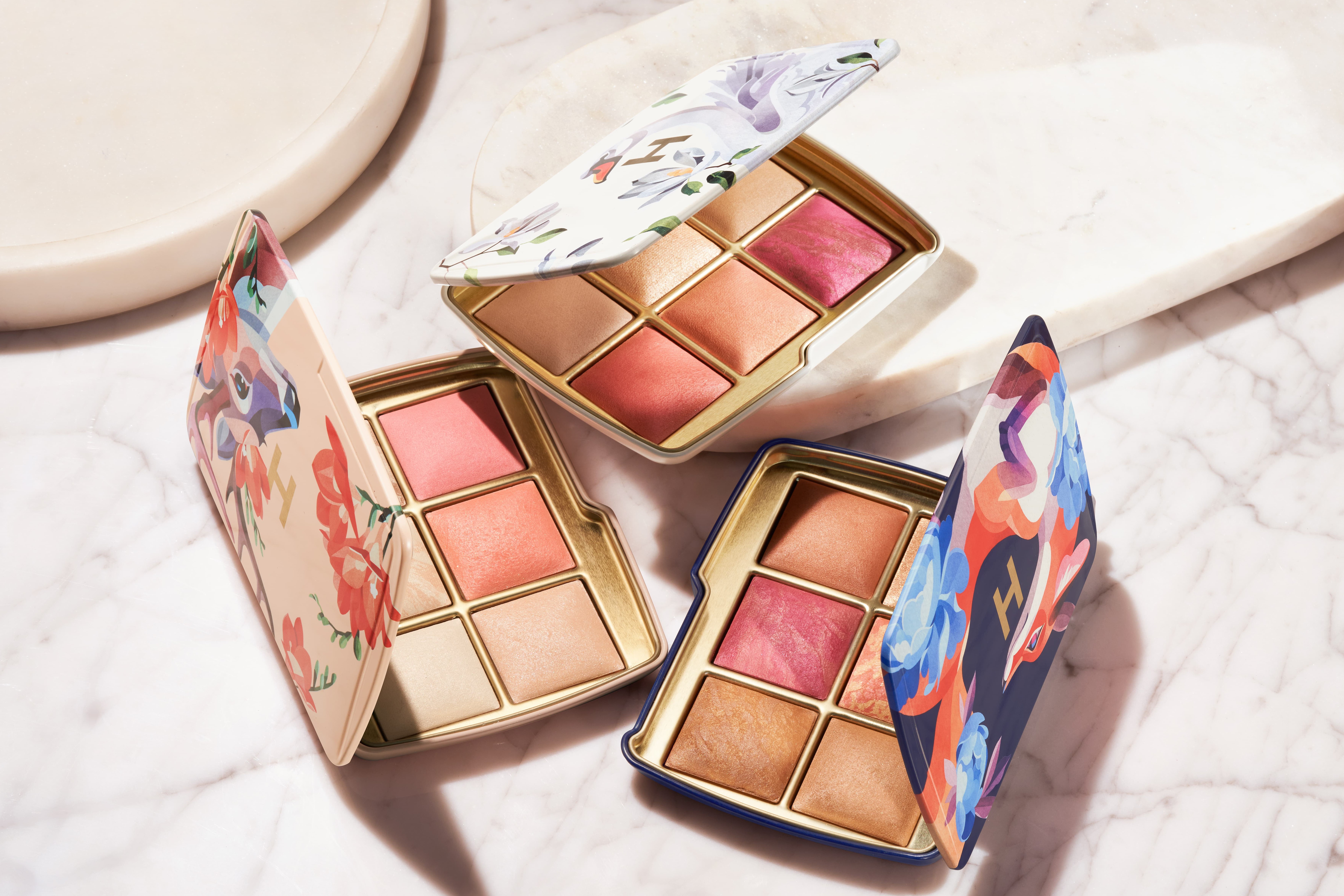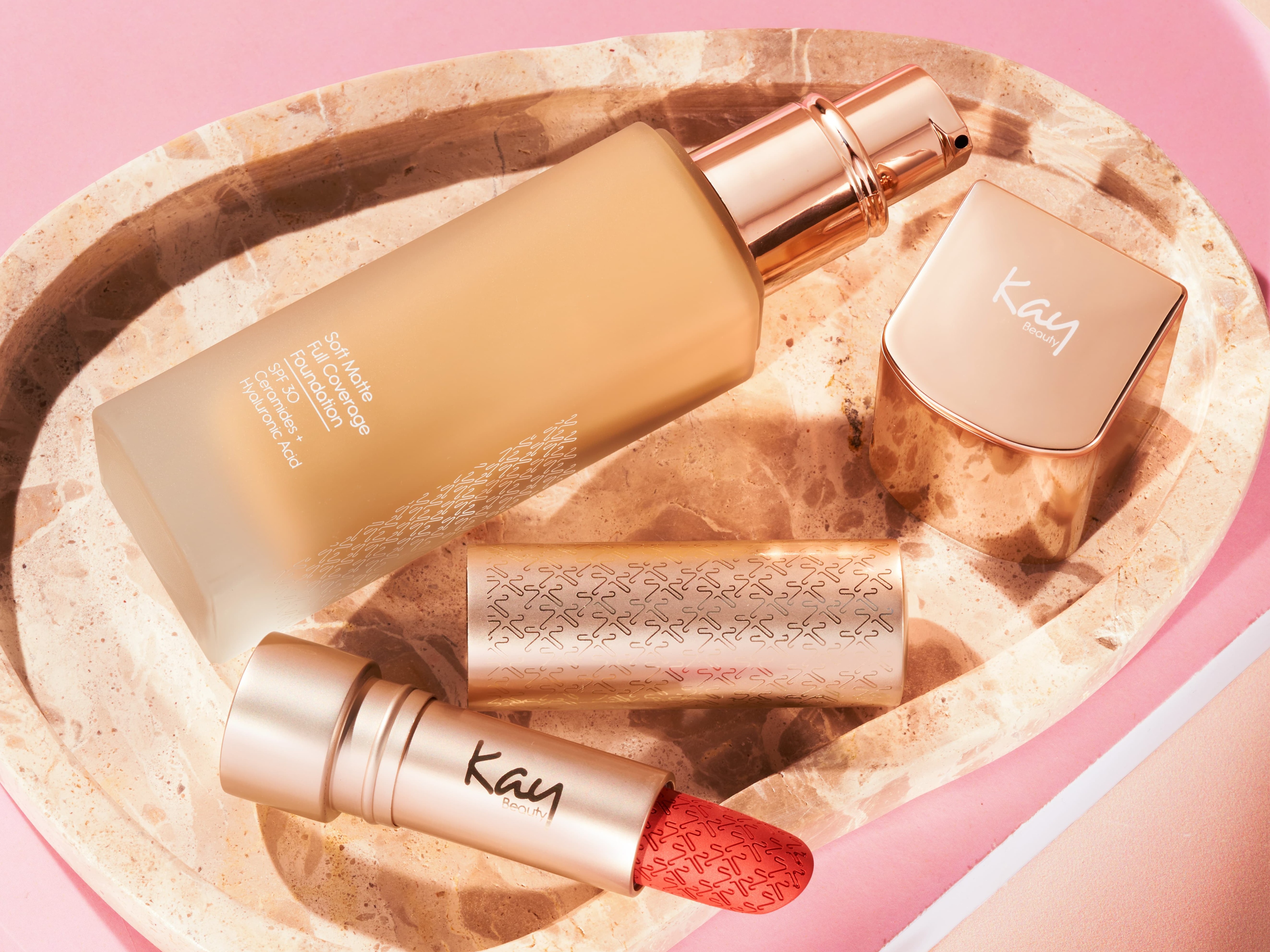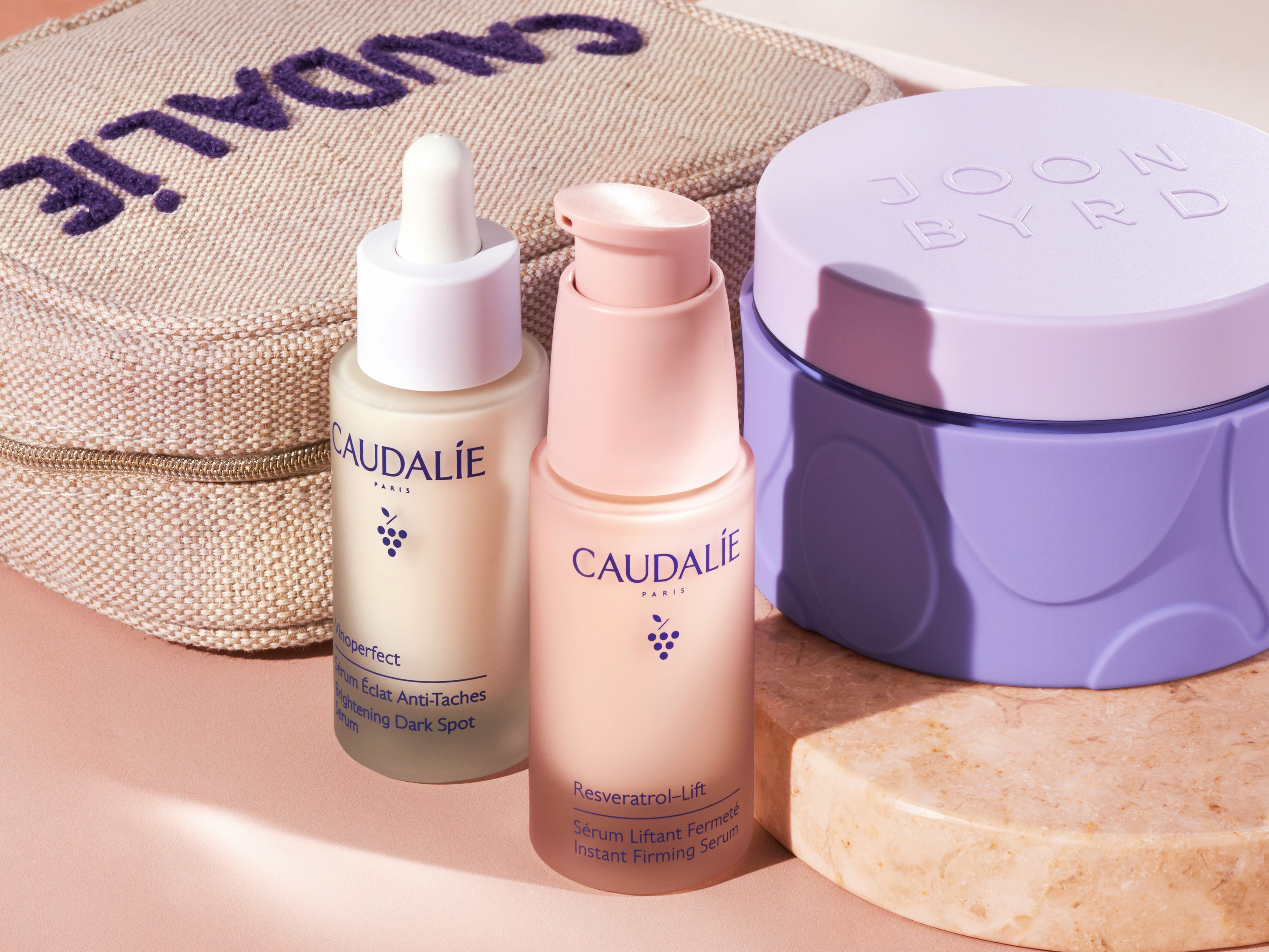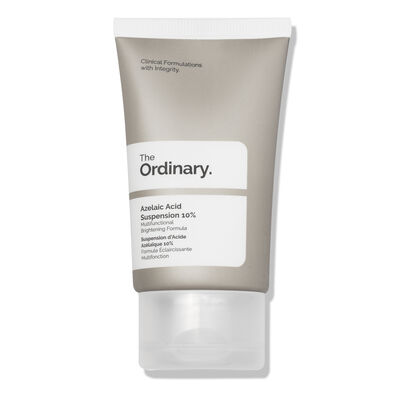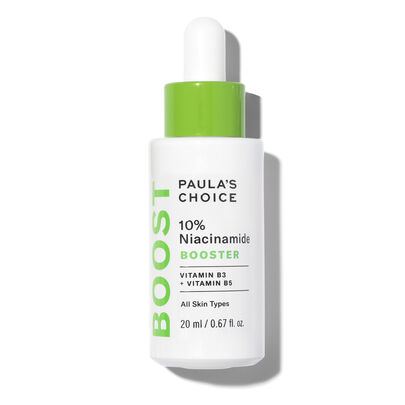How to calm and reduce redness
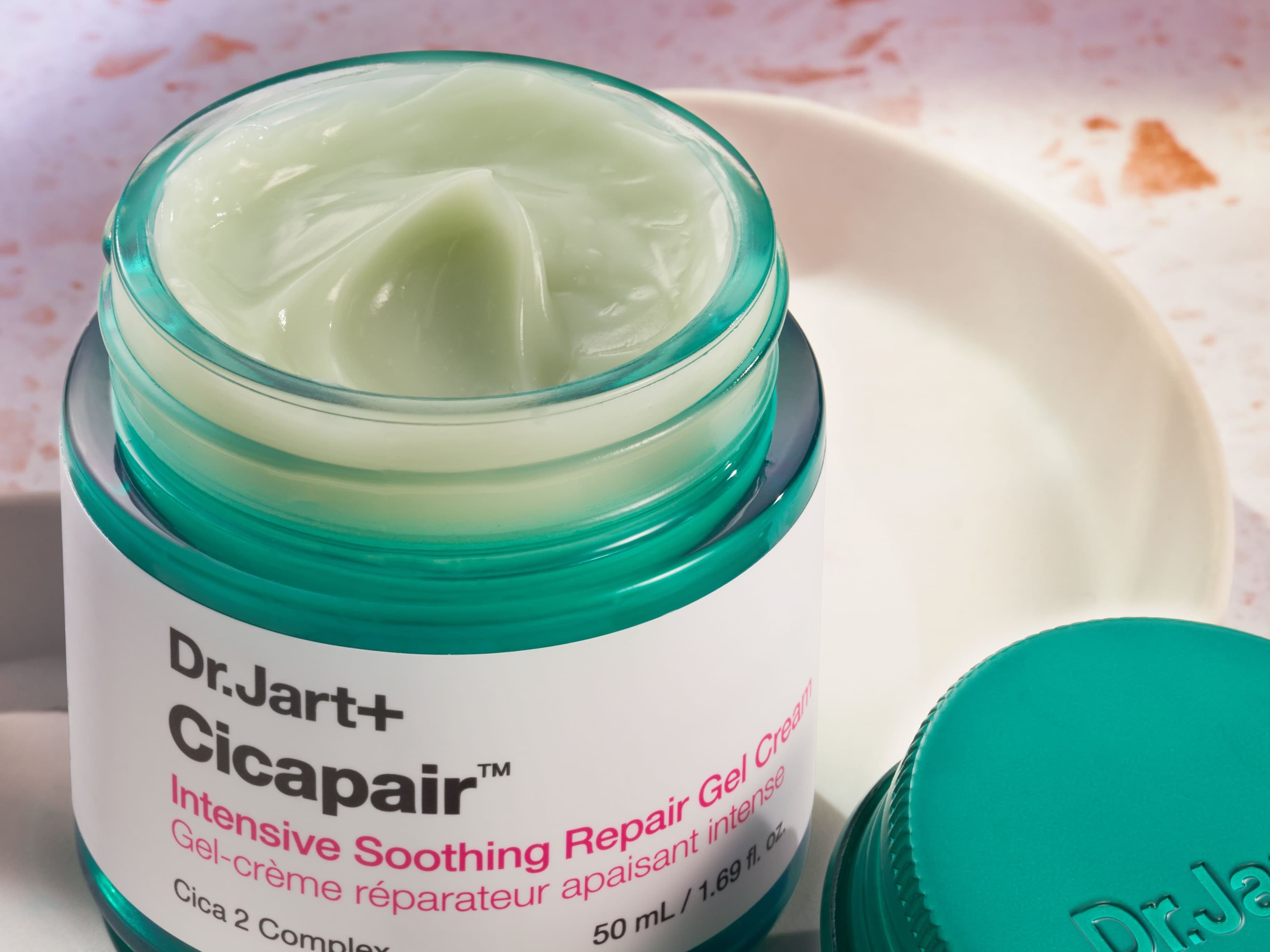
But what causes redness the first place? “Flushing occurs when the blood vessels immediately beneath the skin’s surface fill with blood,” says Dr Sophie Shotter, an award-winning aesthetic doctor and creator of the Age Well with Dr Sophie Shotter podcast. “If you’re prone to flushing, it’s worth trying to identify your triggers - sunshine, alcohol, some active skincare and spicy food are common ones - and trying to avoid them.”
Rosacea is one of the most recognisable conditions under the redness umbrella. And while it affects many people (around 415 million globally according to the National Rosacea Society) it’s not always the underlying cause of redness.
“Skin can be red without having rosacea, but rosacea patients often do have red skin,” explains Dr Shotter. “If you experience flushing, increased sensitivity and bumps or spots, it could be a sign you have it. Rosacea is a medical condition which comes in varying degrees of severity. In its most mild form, it causes flushing. But in severe cases can cause acne rosacea and overgrowth of the nose tissue.”
Why is my skin so red? What causes skin redness on the face?
Hormones, diet, pollution, stress, harsh winds, and hot temperatures, including heat from open fires, central heating, saunas, and hot tubs, can all contribute to redness. Alcohol is a prominent trigger, especially for the 560 million people – mostly from East Asia - who carry a mutation that results in a sudden violent reaction, including flushing and headaches. Here’s a closer look…
Blemishes
Regardless of the cause of your pimple, whether it’s hormones or clogged pores, the area around the breakout will often go red as an indication of inflammation. This inflammation is not always visible, with darker skin tones hiding it well. This redness is not necessarily a bad thing as localised inflammation is a sign the skin healing mode. Whatever you do, do not pick your skin. If redness is a sign the skin is inflamed, the last thing you want to do is pile on more. Instead, use a cool compress.
Acne scars
While acne scaring in darker skin tends to appear as hyper pigmented patches, on pale skin they can appear red. Wondering how to reduce redness on your face from acne scars? Well, it’s nothing concealer won’t cover but a consistent skincare routine featuring barrier-building ingredients such as niacinamide and polyhydroxy acids (PHAs), will support skin healing and help reduce redness over time. With niacinamide plus anti-inflammatory purslane, Paula's Choice Clinical Niacinamide 20% Treatment, £52.00 is a great option.
Sensitive skin
Sensitive skin is more vulnerable to aggressors such as cold temperatures and even some skincare ingredients. As a response, skin flushes and, depending on your colouring, this sudden redness can be very visible. Caring for sensitive skin while reducing redness is largely down to maintaining a strong natural barrier, explains Sophie Anne Perry, a Beauty Industry Educator and Practitioner, and author of The Natural Facelift: Sculpt Your Face At Home In Just 5 Minutes A Day. “If someone has very sensitive skin, I recommend barrier strengthening products containing ceramides. That, plus, devices such as LED, can really help.” The red light emitted by MZ SKIN Light Therapy Golden Facial Treatment Device, £375.00 helps restore a sense of calm to skin, reducing redness.
Rosacea
“The root causes of rosacea are not well understood,” explains Dr Shotter. “Overgrowth of the remodel mite which lives on our skin can trigger rosacea. It could also be to do with genetics, or an overactive immune system. Many people first experience rosacea around perimenopause, suggesting hormonal involvement.” Rosacea is more likely to appear in paler skin, but it does occur in darker skin.
“The early signs of rosacea can easily be missed in darker skin types, and so it is recommended to look out for a warm feeling most of the time, dry swollen skin with darker patches, a dusky brown discolouration, acne-like breakouts, yellowish-brown hard bumps around the mouth or eyes, burning or stinging when applying skincare products, swelling and thickening of the skin on the nose, cheeks, chin and forehead,” says Dr Shotter. “If you experience these, seek advice from a dermatologist.”
In paler skin, where rosacea is more visible, look out for lasting periods of flushing, heat, visible blood vessels, a rash with red or pus-filled bumps, and sensitivity.
Weather changes and sun damage
Redness can be more apparent during the cold winter months as the skin is likely to experience more moisture. “Bad weather worsens redness,” says Perry. “Wind quite literally blows moisture from the skin.” This causes the skin’s natural barrier to become impaired, and redness to set in. Barrier products are important in cold temperatures. Try Drunk Elephant Bora Barrier Repair Cream, £64.00, which contains ceramides and zinc, to strengthen the skin’s defences.
Allergic reactions
An allergic reaction often results in a quick healing response which means inflammation and redness flooding the skin. This can cover a large surface area making it very noticeable. Your first thought should be weather you need medical assistance. Otherwise, if you want to know how to reduce redness on your face from an allergic reaction, this is it: a cold compress, cold facial tool, or calming mask straight out of the fridge to help reduce redness and heat.
Over-exfoliation
The over-use of potent actives and exfoliators strip the skin’s barrier of oils and water, resulting in sensitivity and, you guessed it, redness. Dermatologists report seeing more sensitivity in their clinics, and while it can be caused by many things, there is a correlation with routines using a combination of very active ingredients.
Exfoliating acids, like glycolic, and other potent ingredients such as retinol and vitamin C, are fantastic when used appropriately. But use them in moderation. Don’t use an exfoliating acid on the same day you use a retinol, and don’t use a chemical exfoliator on the same day as a physical exfoliation.
Eczema-prone skin becomes very dry because it’s a challenge to retain moisture. Very dry skin quickly becomes sensitised and inflamed, resulting in redness. Meanwhile, eczema skin is easily irritated, which further adds to inflammation, but this can also result in a desperate urge to scratch, breaking the surface of the skin and drawing blood. Unfortunately, eczema is not easy to treat and so you must speak to a medical professional.
How to calm and reduce redness quickly
Whatever the cause of your redness, there are certain anti-inflammatory and barrier-strengthening tools and skincare for redness that should be part of your routine. Here’s how to get rid of red skin on your face and how to reduce redness on your face fast…
Best ingredients for skin redness
PHAs: “They’re a great rosacea-treating ingredient,” says Dr Shotter. “They gently exfoliate whilst nourishing and hydrating.” PHAs are so gentle in fact, they are suitable even for rosacea-prone skin.
Ceramides: When asking yourself ‘how to soothe irritated skin’ your first thought should be ceramides. “They help nourish the lipid barrier of the skin,” explains Dr Shotter.
Azelaic Acid: If you’re looking for the best treatment for skin redness, azelaic acid is a good option. “It is an excellent ingredient and can be found in both over the counter and prescription strength formulations, helping to calm and soothe redness and sensitivity,” says Dr Shotter.
Niacinamide: More than a buzzword, Niacinamide is a clever anti-inflammatory ingredient that helps to sooth irritation and strengthen the skin barrier. As a fan of the ingredient, Dr Shotter, says, “It’s gentle but effective. It’s a good ingredient to choose.”
Cooling the skin
One of the most uncomfortable symptoms of redness, is the heat. So, if you want to know how to reduce redness on your face quickly counter it with a cooling mask or tool straight from the fridge. Not only will you feel instant relief, but it will help to reduce inflammation and redness too. Try – it’s a fast face redness treatment. If you choose to pop your tool in the freezer to get it extra cold, be careful not to apply it directly to your skin, instead massage it over a nourishing mask such as, 111SKIN Y Theorem Bio Cellulose Facial Mask, £105.00.
Calming skincare routine
Wondering how to reduce skin inflammation and redness? Sensitised skin requires a stripped back routine built on healing and moisture. First, make your cleanse a gentle one, advises Perry. “A double cleanse isn’t always needed and I, myself, only do it in the evening.” Look for a gentle formula that will clean skin without challenging it. Kate Somerville Goat Milk Moisturizing Cleanser, £16.00, is a good place to start. Then pack in more nourishment with a PHA serum such as , which also includes balancing rice extract.
Next, Perry recommends a barrier repairing cream to help skin retain moisture. Try NATURIUM Plant Ceramide Rich Moisture Cream, £27.00. Lastly, if you’re preparing your skin for the day you must finish with SPF, for all the normal reasons but also because sensitised skin is more vulnerable to sun damage. Ultra Violette Supreme Screen Hydrating Facial Skinscreen SPF 50+, £23.80, is a favourite.
Hydrating face masks
A hydrating face mask, such as Drunk Elephant F-Balm Electrolyte Waterfacial Hydrating Mask, £49.00, and Ren Clean Skincare Evercalm Ultra Comforting Rescue Mask, £34.00 will help to restore your weakened skin barrier, helping to reduce sensitivity and redness. A well-functioning skin barrier is one that is flooded with moisture.
Colour correcting treatment
Treating redness doesn’t happen overnight. Until then, CC creams are a fantastic way of reducing its appearance while delivering skin-nourishing ingredients. The green tint in Erborian CC Red Correct, £19.00 has the added benefit of cosmetically counteracting redness, giving the illusion of calmer skin.
Best treatment for skin redness
[copy]Now you’re ready to build your anti-redness regimen, here are five of the best skincare for redness…/copy]How to prevent redness on your face
Identifying your triggers are essential. Start keeping a journal and note when your skin experiences a flare-up so you can spot common denominators such as spicy food, cold weather, or using the sauna. Once armed with that knowledge, you must decide if you want to cut back or eliminate them.
The one thing you must do is ensure you never leave without a high factor SPF. Broad-spectrum SPF protects your skin burning and DNA damage from UV rays which is important at the best of times but vital when your skin is sensitive.
When should I see an expert about my redness?
Redness can be caused by something as simple as being in a warm environment, to something potentially severe such as an allergic reaction. If your skin has suddenly changed in behaviour, remains red and feels painful, then you should seek medical advice sooner rather than later. Otherwise, make an appointment to see a dermatologist or your GP if your skin issues persist and/or feel uncomfortable, despite making changes to your lifestyle and skincare.
Our final thoughts on reducing redness on your face
Redness is certainly nothing to be ashamed of, but it is something take seriously if it’s prolonged and uncomfortable. Luckily, there are many proven calming and anti-inflammatory ingredients at your disposal to help calm your skin, and excellent makeup formulations to help even out your skin (should you wish) in the meantime. Once you understand that redness is just your skin trying to communicate with you, it becomes easier to treat.



